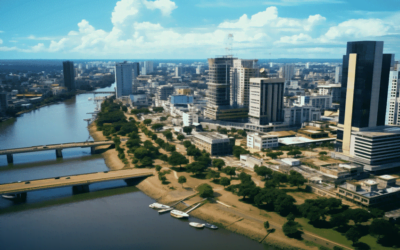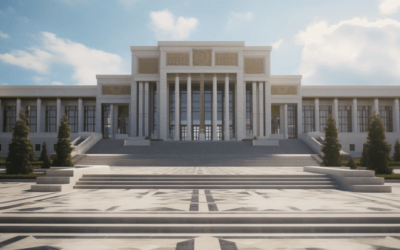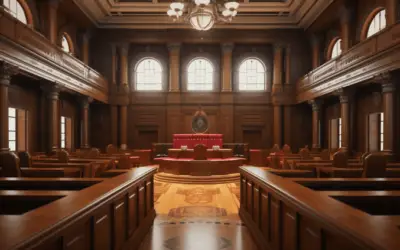Hey there, fellow drone enthusiasts and curious minds! If you’ve landed here, chances are you’re on a quest for answers about Iran’s drone laws.
I get it; the world of drones is fascinating, but it can also be a maze of rules and regulations. Whether you’re an eager hobbyist or a budding commercial drone operator, understanding the do’s and don’ts is crucial. I’ve been there, searching for clarity on Iran’s drone laws, and trust me, you’re in the right place.
Well, let me assure you, I’ve rolled up my sleeves and dived deep into the realm of Iran’s drone regulations. It’s not just about what’s on paper; it’s about real-world insights. I’ve done the legwork to provide the most up-to-date and accurate information.
From deciphering the categories of drones to uncovering the restricted airspace zones and altitude limits, I’ve got the inside scoop. So, whether you’re here for recreational or commercial drone use, you’ve got questions, and I’ve got answers backed by diligent research.
Now, if you’re looking for a comprehensive guide that breaks down Iran’s drone laws in a way that’s engaging, easy to understand, and truly reliable, I invite you to read on.
This article is your ticket to gaining expertise, understanding the authority behind these regulations, and trusting the information you’ll find here. So, fasten your seatbelt (metaphorically, of course!), and let’s navigate the skies of Iran’s drone laws together. Ready for the full scoop? Let’s get started!
Registration and Categorization of Drones

Alright, let’s dive into the nitty-gritty of Iran’s drone laws – registration and categorization. If you’re planning to soar your drone through the Iranian skies, you’ve got to get the legal groundwork sorted out. Here, I’ll walk you through the what, why, and how of drone registration and break down the categories, so you know where your drone fits in and what rules to follow.
Explanation of the registration requirements for drone operators
First things first, let’s talk registration. If you’re flying a drone in Iran, whether it’s just for fun or more professional purposes, you’re often required to get your drone registered. It’s not as intimidating as it sounds, though. Think of it as a way to ensure responsible drone use.
Now, here’s the deal – each country has its own set of rules, and Iran is no exception. The specifics may vary over time, but one thing usually remains constant: the need to inform the authorities about your drone. It’s not just a piece of paper; it’s about accountability and safety.
So, if you’re planning to take flight, stay tuned as I break down the Iranian registration process in a way that makes sense, with all the latest information.
Discussion of different categories of drones based on weight and usage
Drones come in all shapes and sizes, but for regulatory purposes, it’s all about weight and usage. Like many other countries, Iran typically categorizes drones based on these factors.
Whether you’ve got a tiny drone that fits in your palm or a heavier, more advanced one, they have their slots. These categories help authorities establish different rules and requirements for each class of drones.
So, what’s in it for you? Understanding where your drone falls in these categories is the key to knowing what rules you need to follow. The registration process, flying restrictions, and other regulations may vary depending on whether you’re flying a lightweight mini-drone or a heavier, more professional rig. Don’t worry; I’m here to help you make sense of it all.
Specific regulations and rules for each drone category
Now, let’s get into the specifics. Different categories often mean different sets of rules. It’s like having different lanes on a road – each has its own speed limit and traffic rules. In the drone world, these regulations are all about safety, airspace sharing, and ensuring that your drone doesn’t become a nuisance or a danger to others.
For example, you might find that smaller drones have fewer restrictions when it comes to registration and flying in certain areas, while heavier drones intended for commercial use could have more stringent requirements.
I’ll lay out the rules for each category in a way that’s easy to digest. So, whether you’re just starting with a small recreational drone or you’re into commercial aerial photography, you’ll know exactly what’s expected of you under Iran’s drone laws.
Also Read: Drone Regulations in Indonesia 2024
Restricted Airspace Areas

Now, let’s talk about the sky’s limits – those restricted airspace areas in Iran. These are the no-fly zones, and understanding where they are is critical for every drone operator.
In this section, I’ll take you through the hotspots where drone flights are a definite no-go and also fill you in on the consequences of ignoring these restrictions. So, fasten your seatbelt, because we’re about to explore the “stay-out” zones of the Iranian airspace.
Explanation of areas in Iran where drone flights are strictly prohibited
When it comes to no-fly zones, Iran, like any other country, has its list of off-limits places. First off, government and military installations are pretty much at the top of the list. It’s not surprising, right? These areas are sensitive, and flying a drone near them can raise security concerns. So, remember, drones and these areas simply don’t mix.
Airports and aviation zones are another set of restricted areas. It’s common sense. Drones and aircraft sharing the same airspace are a recipe for disaster. These zones are controlled for safety, and you wouldn’t want to mess with that.
Finally, there are other sensitive or restricted areas. These could be places like power plants, industrial sites, or even cultural heritage sites. Each has its reason for being off-limits to drones and understanding why can help you stay out of trouble.
Consequences of violating airspace restrictions
Now, let’s talk about the consequences. Breaking the rules in these restricted airspace areas isn’t taken lightly. The authorities are pretty serious about enforcing these regulations. So, what can happen if you decide to fly your drone where you’re not supposed to? Well, you could be in for some legal trouble.
In most cases, violating airspace restrictions can lead to fines and the confiscation of your drone. The extent of the fine can vary, but it’s something you’d rather avoid.
Depending on the situation, the consequences could even be more severe, possibly involving legal action. It’s not just a buzzkill for your drone adventures; it’s also a risk you don’t want to take. So, always be aware of the no-fly zones, and keep your flights within the legal boundaries.
Also Read: Drone Regulations in India 2024
Altitude Restrictions

Alright, it’s time to lift off and explore the heights—altitude restrictions for drone operations. When it comes to flying drones, it’s not just about going up, up, and away. There are rules governing how high you can soar. In this section, I’ll give you a clear view of these limits and why it’s crucial to stick to them. So, if you’re ready, let’s take our drone knowledge to new heights.
Detailed information on altitude restrictions for drone operations
So, what are these altitude restrictions all about? It’s quite simple. Drones, like any aircraft, have to stay within certain altitude limits when they’re flying. The specifics can vary from place to place, but they’re generally designed to ensure safety and prevent interference with manned aircraft.
For example, in Iran, the altitude limit for most drones used recreationally is often set at around 120 meters (approximately 400 feet). For drones used for commercial purposes, these limits can be a bit higher but usually still well below the cruising altitudes of manned aircraft. The aim here is to maintain clear airspace and reduce the risk of collisions. I’ll dive deeper into the exact numbers and variations in altitude restrictions in the upcoming sections, so you’ll have a clear picture of what to expect.
Importance of adhering to altitude limits for safety and compliance
Now, why is it so important to adhere to these altitude limits? Well, the primary reason is safety. Drones share the skies with other aircraft, including helicopters, small planes, and sometimes even large commercial jets.
Flying your drone too high can put it in the same airspace as these manned aircraft, and that’s a situation you want to avoid at all costs.
Safety concerns aside, breaking altitude restrictions can also land you in legal trouble. Authorities take these rules seriously, and violating them can lead to fines, confiscation of your drone, or even legal consequences.
So, if you’re keen on enjoying your drone without the added stress of legal issues or safety hazards, sticking to the altitude limits is a non-negotiable part of responsible drone operation.
Also Read: Drone Regulations in Iceland 2024
Remote Pilot License

Now, let’s explore the skies from a different angle – remote pilot licenses. If you’re considering using your drone for more than just a casual spin in the park, understanding the ins and outs of remote pilot licenses is essential.
In this section, I’ll give you a bird’s-eye view of what it takes to obtain one, the certification process, and what distinguishes licenses for recreational and commercial drone operations. So, if you’re ready to take your drone flights to a professional level, let’s get started.
Overview of the requirements for obtaining a remote pilot license
Getting a remote pilot license isn’t a walk in the park, but it’s a rewarding journey. The requirements generally depend on the category of drone operations you’re interested in.
If you’re flying for fun, the requirements are often less stringent, but still crucial for safety. For those who want to use their drones for commercial purposes, the process is more comprehensive.
Typically, you’ll need to meet certain age requirements, complete training, and pass a test to demonstrate your knowledge of aviation rules, safety procedures, and regulations. It’s all about ensuring that you have the necessary skills and understanding to operate a drone safely and responsibly.
Explanation of the certification process and the necessary criteria
The certification process often involves studying and preparing for an examination that covers various aspects of drone operation, including airspace regulations, weather conditions, emergency procedures, and more. It’s like taking your drone knowledge to the next level.
You’ll also need to meet specific criteria, such as passing a background check and demonstrating your ability to operate a drone safely. The exact criteria may vary over time, so it’s essential to stay current with the latest requirements and be well-prepared for the certification process.
Distinction between licenses for recreational and commercial drone operations
Now, let’s talk about the distinction between licenses for recreational and commercial drone operations. Recreational drone operators often follow more basic requirements, while commercial drone operators have to meet stricter standards.
The primary difference is in the scope of your operations. Recreational flying is for personal enjoyment, while commercial operations involve using your drone for financial gain.
So, whether you’re planning to use your drone to capture breathtaking aerial shots for a business venture or just for personal photography, understanding the differences between these licenses is essential. It will help you determine which path is right for your drone endeavors and ensure you’re fully compliant with Iran’s drone laws.
Also Read: Drone Regulations in Hungary 2024
Privacy and Safety

Let’s talk about a couple of critical aspects that often take a backseat when we’re caught up in the excitement of drone flying – privacy and safety.
While we’re all for enjoying the freedom and creativity drones offer, it’s equally important to respect the privacy of others and maintain a safe flying environment. In this section, we’ll delve into the ethical and legal responsibilities of drone operators when it comes to privacy and outline safety guidelines to ensure everyone enjoys the skies safely.
Discussion on the ethical and legal responsibilities of drone operators regarding privacy
Privacy, both ethical and legal, is something that we all value. When it comes to drone flights, respecting the privacy of individuals and property is paramount. Drones equipped with cameras can capture stunning images and videos, but they can also infringe on the personal space of others.
Drone operators must adhere to the principles of privacy. This means avoiding flying over people’s homes, backyards, or private properties without their consent. The concept is simple; if you wouldn’t want a drone buzzing around your property, don’t do it to others. Laws surrounding privacy can vary, but it’s a good practice to maintain respect and consideration for others while enjoying the freedom of drone flight.
Safety guidelines for drone flights, including maintaining a safe distance from people, property, and aircraft
Safety isn’t just a buzzword; it’s a responsibility. Drones can be a lot of fun, but they’re also flying objects with spinning blades, which can pose risks. To ensure a safe environment, it’s essential to follow some basic guidelines.
First and foremost, maintain a safe distance from people, property, and aircraft. Drones can be unpredictable, and even the most experienced operators can face unexpected issues. Keeping a buffer zone between your drone and people or property reduces the risk of accidents and potential injuries.
When it comes to aircraft, it’s simple – don’t fly near them. Manned aircraft always take precedence in the skies, and your drone should never interfere with their operations. To ensure safety, it’s crucial to understand and follow the airspace restrictions and respect the no-fly zones, especially around airports and other sensitive areas.
By following these safety guidelines, you not only ensure the well-being of others but also create an environment where drone enthusiasts can continue to enjoy their hobby responsibly.
Also Read: Drone Regulations in Honduras 2024
Liability Insurance

Let’s chat about a topic that might not be as thrilling as soaring through the skies but is equally essential – liability insurance for drone operators. You see, accidents happen, and when they do, having insurance can be a real lifesaver.
In this section, we’ll explore why liability insurance is crucial, the different types of coverage, and how it can come to your rescue in case of accidents or incidents. So, let’s get into the nitty-gritty of protecting your drone investment and more.
Explanation of the need for liability insurance for drone operators
If you’re flying a drone, you’re in charge of a piece of technology that can potentially cause damage or harm. It might be as simple as a crash into someone’s property or something more serious.
This is where liability insurance comes in. Think of it as a safety net that protects you and others in case things go south.
Liability insurance is often a requirement in many places, and Iran is no exception. It’s about being responsible and ensuring that if your drone does cause damage or harm, you have the means to make it right. Whether it’s covering property damage, personal injury, or legal expenses, liability insurance provides the financial security you need to navigate the legal complexities that can arise from drone-related incidents.
Discussion of the types of insurance coverage and their significance in the event of accidents or incidents
Now, let’s talk about the types of insurance coverage you might encounter. Liability insurance typically covers two main areas: property damage and bodily injury.
Property damage coverage is pretty straightforward – it takes care of expenses if your drone causes damage to someone’s property. This could include repairing a damaged car, a broken window, or other property-related costs.
Bodily injury coverage is equally important. It’s there to help if your drone accidentally harms someone. While we all strive for safe flights, accidents can happen, and having this coverage means you won’t be left dealing with medical bills or other related costs.
In the grand scheme of things, liability insurance offers peace of mind and a safety net for the unexpected.
It’s not just about protecting your drone; it’s about ensuring that you can operate it responsibly and confidently. So, whether you’re capturing stunning aerial photos or mapping out terrain, make sure you’ve got the right insurance coverage to keep your drone adventures as smooth as possible.
Also Read: Drone Regulations in Haiti 2024
Enforcement and Penalties

Now, let’s shift our focus to a part of the drone world that isn’t as glamorous as soaring through the skies—the enforcement of drone laws in Iran. Knowing how these laws are enforced and what happens when they’re violated is essential for responsible drone operations.
In this section, I’ll provide you with insights into the enforcement of drone laws and the potential penalties for violations. So, let’s dive into the world of compliance and consequences.
Insight into the enforcement of drone laws in Iran
Enforcement is the backbone of any legal framework, and drone laws are no exception. In Iran, like in many other countries, drone laws are enforced by aviation and security authorities. These entities are responsible for ensuring that drone operators adhere to the rules and regulations.
In practice, this means that drone operators can expect to encounter law enforcement officials if they are suspected of violating drone laws. The extent of enforcement may vary based on the nature of the violation, but the objective is to maintain safety and security in the airspace. Understanding how these laws are enforced is a crucial part of responsible drone operation.
Potential penalties for violations, including fines, confiscation of equipment, or legal consequences
Violating drone laws can lead to various consequences, and these consequences can be quite significant. Potential penalties for violations may include fines, confiscation of equipment, or even legal consequences. The severity of the penalties can depend on the nature and severity of the violation.
For instance, flying in restricted airspace areas or engaging in unsafe drone operations can result in fines and the confiscation of your equipment. In more serious cases, legal actions may be taken against the operator. It’s not just about the financial implications; it’s also about understanding that there are real consequences for not following the rules.
In summary, enforcement and penalties are not to be taken lightly. Responsible drone operators need to be aware of the potential repercussions of violating drone laws, not only to protect their equipment and finances but also to ensure the safety of the airspace and the people within it.
Also Read: Drone Regulations in Guyana 2024
Local Regulations

As we wrap up our journey through Iran’s drone laws, there’s one last piece of the puzzle to consider – local regulations. Just like national rules, local authorities and municipalities can have their say in the drone game.
In this section, we’ll touch on the possibility of local regulations and why it’s crucial to research and comply with these rules in addition to the national ones. Let’s explore this final layer of drone operation in Iran.
Mention of the possibility of local authorities or municipalities having their drone regulations
You might be thinking, “I’ve got the national regulations down, so I’m good to go, right?” Well, not quite. Local authorities and municipalities can set their drone regulations.
These regulations might address specific concerns or requirements related to the local environment or community. It’s not uncommon for local governments to restrict drone use in certain parks or areas to protect public safety and privacy.
It’s important to note that these local regulations can vary significantly from one place to another. What’s allowed in one city may not be permissible in the next. To ensure you’re on the right side of the law, you’ll need to dive into the local rules wherever you plan to fly your drone.
Importance of researching and complying with local rules in addition to national regulations
Understanding and complying with local regulations is just as crucial as adhering to national laws. Neglecting local rules can result in unwanted legal consequences and disputes with local authorities. Moreover, it’s a matter of respect for the local community.
To stay compliant, you’ll need to do some homework. This might involve contacting local authorities, reviewing municipality websites, or seeking guidance from local drone hobbyist groups. By making the effort to research and follow both national and local regulations, you can enjoy your drone flights without worries and ensure you’re a responsible member of the drone community.
In summary, when it comes to drone operations, the national regulations are only part of the story. Don’t forget to explore and respect the local rules in your chosen flying area. It’s a simple but essential step in being a responsible and law-abiding drone operator.
Also Read: Drone Regulations in Guinea-Bissau 2024
Recent Developments

Before we wrap up our journey through Iran’s drone laws, let’s talk about a crucial element – staying up-to-date with recent developments.
Laws, including those regarding drones, can change over time, so it’s essential to be aware of any recent updates. In this section, I’ll provide insights into any recent changes or updates in Iran’s drone laws and stress the importance of staying informed about evolving regulations. Let’s dive into the ever-evolving world of drone regulations.
Information on any recent changes or updates in Iran’s drone laws, if applicable
It’s worth noting that drone laws, like any other laws, aren’t set in stone. They can evolve in response to technological advancements, safety concerns, or changes in the regulatory landscape. In Iran, as in many countries, recent developments might include new restrictions, updated licensing requirements, or changes in airspace regulations.
To find out about these developments, it’s essential to keep an eye on official sources, government websites, and reputable news outlets. Joining online forums or drone enthusiast communities can also be a great way to stay informed, as fellow drone enthusiasts often share the latest news and updates.
Emphasis on staying up-to-date with evolving regulations
Staying informed about evolving regulations isn’t just a good practice; it’s a responsibility. Ignorance of the law isn’t an excuse, and you have to ensure that your drone activities comply with the most current regulations.
As drone technology continues to advance, we can expect further developments in the legal landscape. New laws may address emerging concerns, and existing regulations may be refined to accommodate the changing drone industry. Whether you’re a recreational flyer or a commercial operator, keeping up with these changes is a vital part of being a responsible and law-abiding drone pilot.
In conclusion, the world of drone regulations is dynamic, and staying informed about recent developments is a fundamental part of responsible drone operation. So, remember to stay updated, fly safely, and enjoy your drone adventures within the bounds of the law.
Also Read: Drone Regulations in Guinea 2024
Final Thought On Iran Drone Laws

As we reach the end of our journey through Iran’s drone laws, let’s take a moment to recap the key points we’ve covered. It’s been quite the ride, and I hope you now have a better understanding of the regulations that govern drone operations in Iran.
In this concluding section, I’ll provide a summary of these essential points, offer encouragement for responsible and lawful drone operations, and emphasize the importance of checking official sources and seeking legal advice if ever unsure about specific regulations.
Recap of the key points in Iran’s drone laws
Throughout this article, we’ve explored the various aspects of Iran’s drone laws, from registration and categorization of drones to restricted airspace areas, altitude restrictions, the need for a remote pilot license, privacy and safety considerations, liability insurance, enforcement, and penalties, and the significance of local regulations. Understanding these key points is fundamental to ensuring safe and responsible drone operations within Iran.
Encouragement for responsible and lawful drone operation
Operating a drone is not just a hobby; it’s a responsibility. I encourage all drone enthusiasts in Iran to operate their drones with a strong sense of responsibility and by the law. Safe and respectful drone operation not only protects the public but also safeguards the future of this exciting technology.
Remember, being a responsible drone operator means more than just adhering to the rules; it means contributing to a positive and thriving drone community. Share your knowledge, help others learn, and foster a culture of safety and respect.
The importance of checking official sources and seeking legal advice if unsure about specific regulations
Lastly, always remember to stay informed. Laws can change, and you must stay updated with the most current regulations. Rely on official sources, government websites, and reputable news outlets to keep yourself informed.
If you ever find yourself uncertain about specific regulations or facing complex drone-related scenarios, don’t hesitate to seek legal advice. The guidance of legal experts who specialize in drone law can be invaluable, ensuring that you navigate the legal landscape confidently and responsibly.
In closing, the world of drone operations in Iran offers an exciting opportunity for creativity and innovation. By understanding and following the rules and regulations, we can ensure that this opportunity remains open for all while preserving the safety and security of our skies. Fly safe, fly responsibly, and enjoy your drone adventures!
Also Read: Drone Regulations in Guatemala 2024
Frequently Asked Question
1. Do I need to register my drone in Iran, and how do I go about it?
Drone registration is mandatory in Iran. To register your drone, you’ll need to provide identification documents, pay a fee, and complete the necessary paperwork. Keep in mind that the registration process may vary based on the category and purpose of your drone.
2. What are the rules regarding flying drones near airports in Iran?
Flying drones near airports or aviation zones is strictly prohibited to ensure the safety of manned aircraft. You should always maintain a safe distance from these areas to prevent potential accidents and disruptions to air traffic.
3. Can I fly my drone over government and military installations in Iran?
No, you should never fly your drone over government or military installations. These areas are considered highly sensitive, and any attempt to fly a drone over them can result in serious legal consequences. Respect these restrictions to avoid any trouble.
4. What is the importance of liability insurance for drone operators in Iran?
Liability insurance is crucial for drone operators in Iran. It provides financial protection in case your drone causes damage or harm. This insurance covers property damage and bodily injury, ensuring you can address any unexpected expenses that might arise from drone-related incidents.
5. How can I stay updated with the latest changes in Iran’s drone laws?
Staying updated with evolving regulations is essential. To keep yourself informed, regularly check official sources, government websites, and reputable news outlets for any updates or changes in the law. Joining online forums or local drone enthusiast communities is also a great way to stay in the loop and share knowledge with fellow drone enthusiasts. If you ever find yourself unsure about specific regulations or facing complex scenarios, don’t hesitate to seek legal advice from experts specializing in drone law. They can provide valuable guidance to help you navigate the legal landscape confidently and responsibly.













